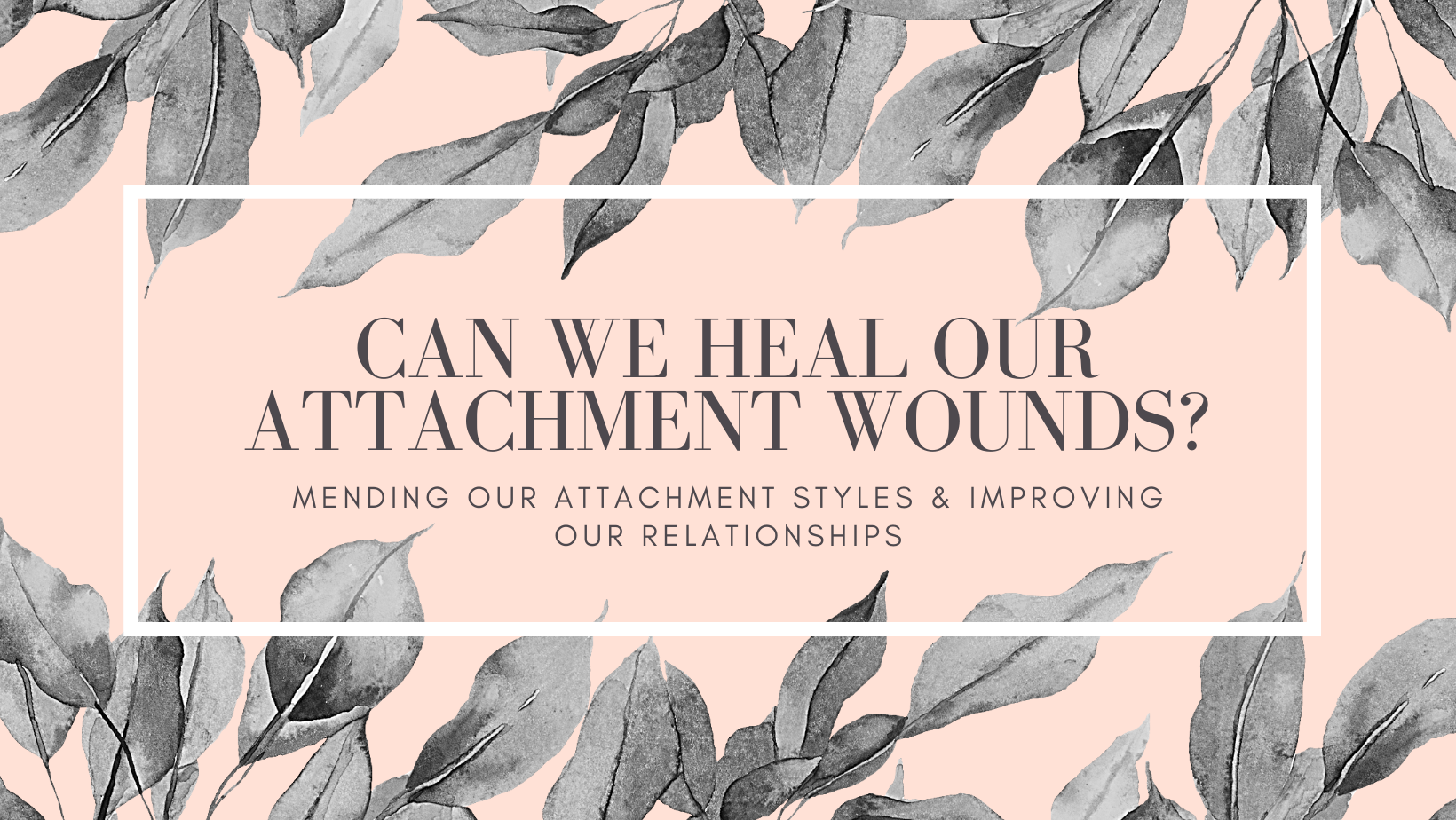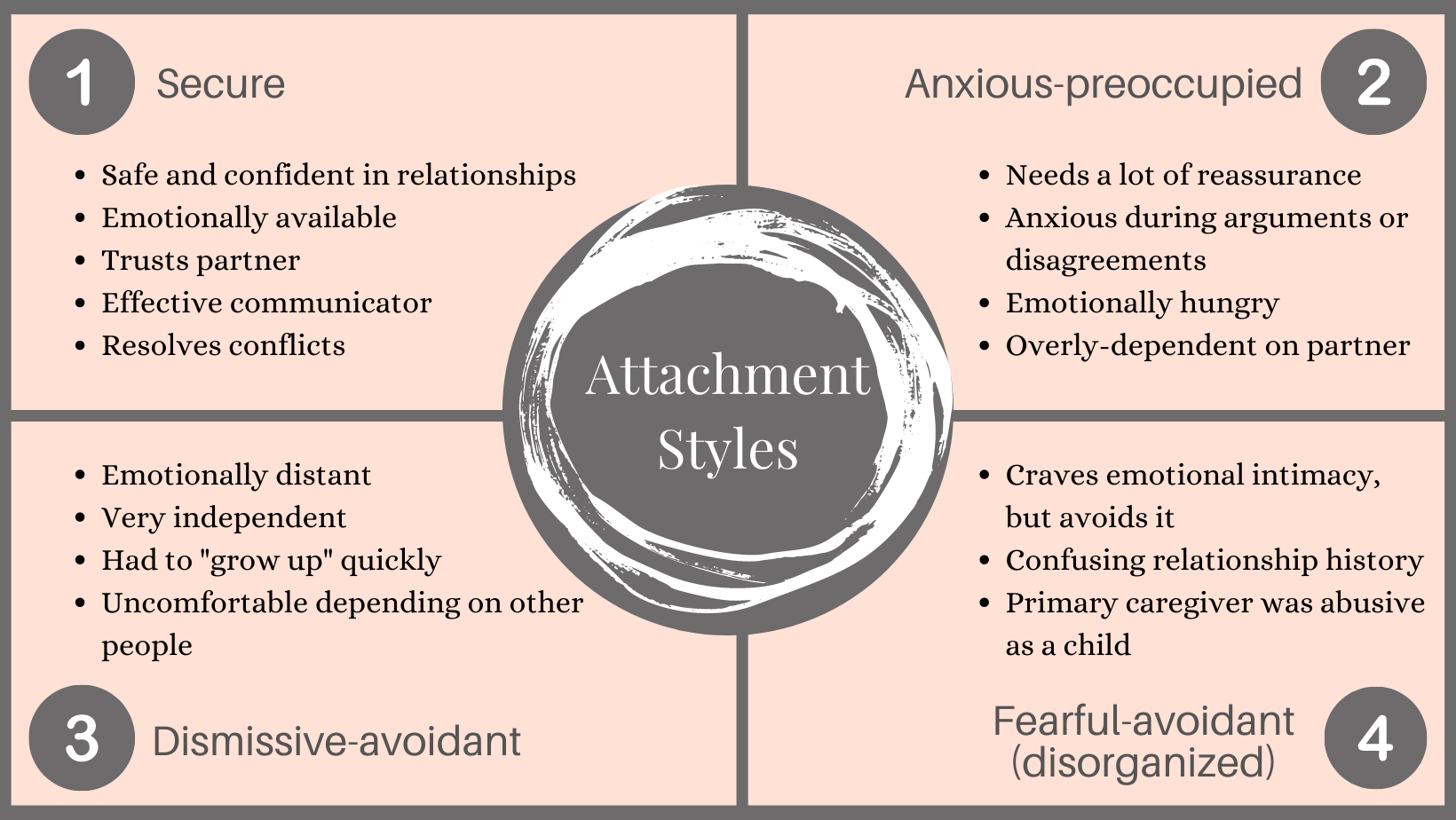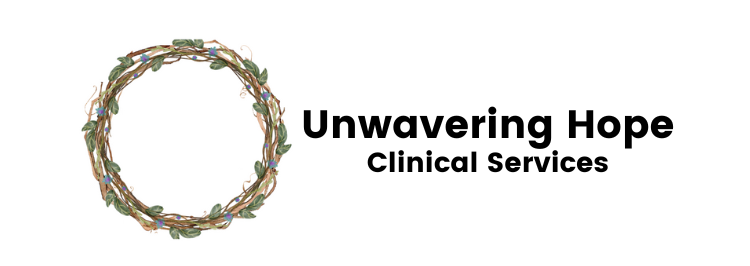
Do you have difficulties with intimacy? Conflict in romantic relationships? Trouble communicating with your partner? You might want to take a closer look at your attachment style.
Did you know that early childhood relationships with our parents and caregivers shape the way we relate to others later on in life? Our relationship with our parents and caregivers creates a ‘blueprint’ for how we handle relationships in adulthood. These childhood attachment styles manifest in our adult relationships and can impact many aspects of our relationships, including:
- Intimacy: How we perceive closeness with others;
- Relationship expectations: How we establish our intentions and desires around love;
- Conflict: How we respond to conflict and manage disputes with loved ones;
- Communication: How we effectively communicate our needs to our partner and how well we understand the needs of our partner.
Understanding how our attachment styles manifest in our romantic relationships is a vital part of growing towards growth and fulfillment.
Our early childhood relationships with parents and caregivers can result in developing one of four main attachment styles: secure, anxious-preoccupied, dismissive-avoidant, and fearful-avoidant (disorganized).

Years of research has found that adults who have a secure attachment usually have more stable and lasting relationships, while people with any of the other three insecure attachments experience more turbulent and unpredictable romantic relationships.
Fundamentally, these four attachment styles speak to our level of security or insecurity that stem from our childhood upbringing. Approximately 60% of adults have a secure attachment, while the other 40% of adults fall into one of the three insecure attachment styles. This is a huge chunk of the population, so if any of the insecure attachment styles sounded familiar, you are certainly not alone.
The first step of healing is figuring out which of the four attachment styles fit you best. Do any of these four attachment styles resonate with you? If you find yourself leaning towards any of the three insecure attachments, don’t worry. Primarily, it is not your fault that you do not have a secure attachment style, nor are you doomed because of your upbringing – insecure attachment styles are not irreparable!
Research shows that we can repair our attachment styles towards being healthier and more secure. After all, relationships that are based on secure attachment are the ideal model because they almost always guarantee healthier relationships. The good news is that learning secure attachment is possible. Any attachment style can in fact be changed.
So, how can we repair our attachment style? How can we move towards being more securely attached?
- Know yourself: If you have read this far, you are already interested in understanding your own attachment style and repairing your romantic relationships. You are on the right track. Try to get familiar with how your attachment style plays out in your relationships. Reflect on your own needs and triggers. What will make you feel more secure? What behaviours make you feel unsafe?
- Know your boundaries: Once you have a better sense of your emotional needs and the things you require to feel safe in a relationship, try setting some boundaries with your partner. If you are not in a relationship, make a list of your non-negotiables that you need in a romantic partner. This will help you get a better sense of what kind of boundaries need to be set. As a bonus, it can also help you recognize red flags in other potential partners.
- Figure out your partner’s attachment style: Did you know that people with anxious-preoccupied attachments are more likely to attract partners with a dismissive-avoidant attachment? If you are in a romantic relationship, knowing your partner’s attachment style will tell you a lot about their needs, desires, and the ways they respond to you.
- Work on yourself: This may sound cliché, but it is guaranteed impossible to have a secure and healthy relationship without being self-compassionate to yourself. Building a higher sense of self-worth and self-esteem is not always easy – especially when you may think that you do not deserve love or that your partner may abandon you. If you find yourself talking to yourself in an overly-critical or negative way, try flipping the narrative and talking to yourself from a place of kindness. You wouldn’t talk to a loved one in such a negative manner, so why talk to yourself this way?
- Learn emotional regulation: Emotional regulation is your ability to cope with life’s ups and downs. Those who already have a secure attachment may have learned this skill growing up. Emotional regulation helps us deal with feelings of being overwhelmed, anxious and unsafe. It helps us move away from negative, impulsive reactions and move towards healthier ways of coping. On the flip side, emotional regulation will also help you better tolerate other peoples’ behaviours that may upset you as well.
- Building better communication: If you are in a romantic relationship, work on creating more transparency and trust together. Practice communicating your needs to others. For this, using “I” statements are often an effective way to express your needs. Being intimately close with your partner means being able to tell them your needs and struggles. No one is a mind reader, so being able to effectively communicate in an honest manner can help your partner better understand what you need.
- Look into therapy: Thinking about your attachment style can mean looking back at some painful childhood memories. You do not have to work through this alone. Seeking out a professional can be a supportive avenue in healing these old (and new) wounds. If you are interested in therapy, Michelle Aziz Counselling is currently accepting new clients. To be matched with a therapist, please reach out to us.
Remember – having an insecure attachment style is not your fault, but you can work to repair it and build healthier and more secure intimate relationships.
***
Article written by Ruxi Gheorghe MSW Candidate, Clinical Intern with Michelle Aziz Counselling.
References
Bakermans-Kranenburg, M. J., & van Ijzendoorn, M. H. (2009). The first 10,000 Adult Attachment Interviews: Distributions of adult attachment representations in clinical and non-clinical groups. Attachment & Human Development, 11(3), 223–263. https://doi.org/10.1080/14616730902814762
Hazan, C., & Shaver, P. (1987). Romantic love conceptualized as an attachment process. Journal of Personality and Social Psychology, 52(3), 511–524. https://doi.org/10.1037/0022-3514.52.3.511
Huber, B. R. (2014, March 27). Four in 10 infants lack strong parental attachments. Princeton University. https://www.princeton.edu/news/2014/03/27/four-10-infants-lack-strong-parental-attachments.
Stanton, S. C. E., Campbell, L., & Pink, J. C. (2017). Benefits of positive relationship experiences for avoidantly attached individuals. Journal of Personality and Social Psychology, 113(4), 568–588. https://doi.org/10.1037/pspi0000098
